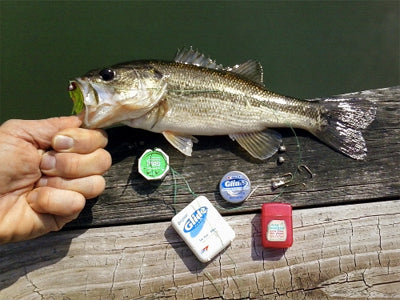Human Teeth No Longer Fit in the Human Jaw - The Reason May Have to do With Modern Farming
Have you ever stopped to consider how incredible your teeth are?
Think about it. How many thousands of meals have you chewed with the same set of teeth? We use our teeth break down chewy or crunchy food, but how often do we break a tooth?
Our teeth may be strong, but that doesn’t mean they’re problem-free. In fact, dental crowding and malocclusion (misalignment) affects one in five people.
Did you once have (or do you still have) impacted wisdom teeth? Are your front teeth crowded or crooked? Do your upper teeth jut out at a strange angle?
Most of us can answer “yes” to at least one of those questions. And even with corrective procedures like braces or extractions, it seems like our mouths are just too small to hold all our teeth.
Why are these problems so common? Our teeth perform their function perfectly, so why don’t they perfectly fit in our jaws?
In this post, we’ll look into science and history to see if there’s a connection between our crowded teeth and the modern diet.
The Science of Our Teeth and Jaw
According to science, it’s not that our teeth are too large for our mouths. The problem is that our jaws are too small for the teeth.
How do we know this?
Our teeth are encased in a hard cap of enamel. As a tooth forms, the cells that create this cap move from the inside out, leaving behind a trail of enamel. When the tooth erupts, these enamel-making cells die and are shed.
What does this mean? Basically, the size and shape of our teeth are genetically programmed. They do not and cannot change based on any external factors.
Our jaws, however, are quite different. Jaw size depends on environment and genetics. It grows longer the more it’s used, particularly during childhood. This is due to the way growing bone responds to stress.
To test these theories, a biologist at Harvard University conducted a study on rodents. He fed one group soft, cooked food and he fed a second group hard, raw food.
The results? The more the rodents chewed, the more visible growth in the bones that anchored the teeth. He concluded that jaw length ultimately depends on the stress placed on it while chewing.
What We Learn from Anthropology
But those are rodents, some may argue. What about humans?
Let’s look at three studies on the subject.
-
University College Dublin
In this study, researchers analyzed “the lower jaws and teeth crown dimensions of 292 archaeological skeletons from between 28,000-6,000 years ago.”
They found a noticeable difference in jaw structure that perfectly coincided with mankind’s transition from hunter-gatherers to farmers.
-
University of Arkansas
This study focused on the Hadza foragers in Tanzania, who still practice a traditional hunter-gatherer lifestyle.
Researchers found an average of 20 erupted back teeth in a Hadza mouth (versus 16 in modern cultures). The tribespeople also show a tip-to-tip bite between the upper and lower front teeth, while the edges of the lower teeth form a perfect arch.
-
Southern Illinois University
In this study, dental anthropologists at Southern Illinois University compared city dwellers with rural residents in Chandigarh in northern India.
The city dwellers ate mainly soft breads and mashed lentils, while the rural residents ate a diet of coarse millet and tough vegetables. Researchers saw notable differences in jaw size between the two groups.
Putting the Facts Together
These studies provide compelling evidence that diet dictates the ultimate size and shape of the human jaw.
Earlier in mankind’s history, hunter-gatherers needed large, powerful jaws to chew raw vegetables and meat. As our society transitioned into farming, our diet started to include softer, cooked foods.
Since chewing these foods didn’t demand the same amount of mouth strength, over time our jaws became smaller. Our teeth, however, did not. This is why teeth crowding and tooth impaction is so common today.
In a nutshell, we all have modern jaws with an outdated number of teeth.
What’s the Takeaway?
Our modern diet has changed many things about our bodies, including the size of our jaws.
Think about the mushy baby food we feed our infants. Think about baked goods, steamed vegetables, and cooked starches. What do they all have in common?
They’re soft and easy to chew. This means our jaws don’t develop as much as nature intended them to.
The result is crowded, crooked, or impacted teeth. Because our mouths are smaller than they should be, this could also contribute to problems like snoring and sleep apnea.
Short of extracting problematic teeth, are there any other solutions?
Researchers suggest that dentists and orthodontists should place more focus on growing jaws, especially in children. In adults, there are some surgical options that stimulate bone growth and can result in shorter treatment times.
Of course, most of us don’t require such drastic measures. Dentists and orthodontists have plenty of other ways to correct our bites and keep our teeth and jaws healthy.

